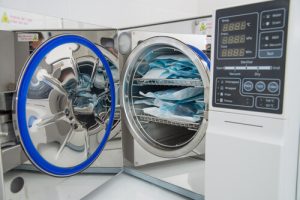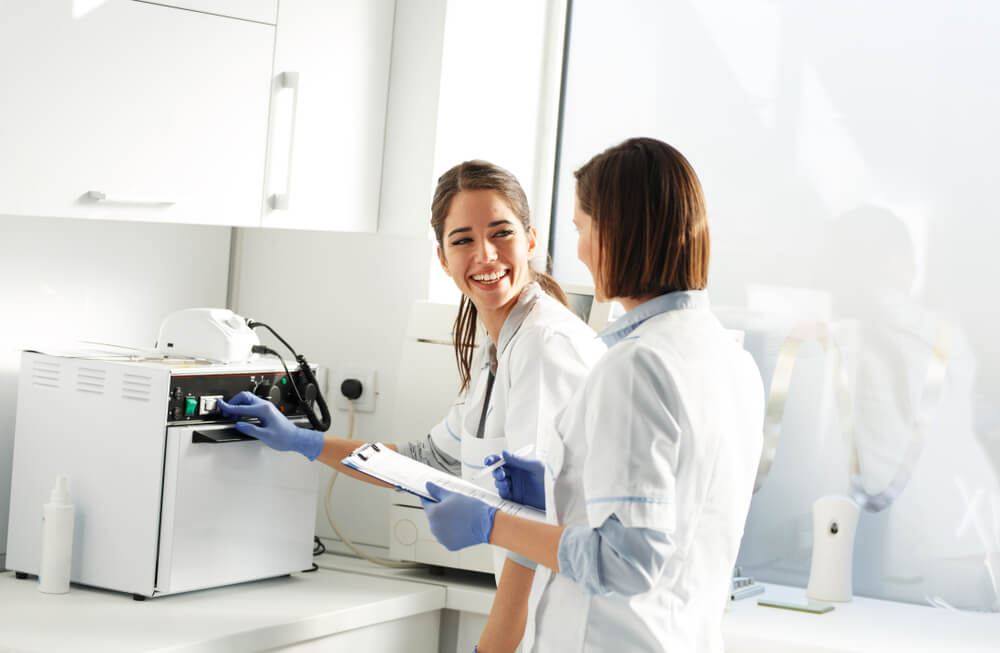Determining how long unwrapped items should be sterilised in an autoclave is crucial for maintaining stringent hygiene standards in medical and laboratory settings. This guide will explore the factors influencing sterilisation times and the importance of adhering to established protocols. Without revealing everything, we’ll delve into why precision in sterilisation processes is not just a recommendation but a necessity for safety and effectiveness. Join us as we uncover the critical aspects of autoclave usage that ensure thorough sterilisation and optimal outcomes.
Introduction to Autoclave Sterilisation
 Autoclave sterilisation is critical in many healthcare facilities and laboratories to ensure that surgical instruments, lab ware, and other items are free from microorganisms and suitable for medical use. This method employs steam under high pressure and temperature to achieve sterility. Key aspects of the process include:
Autoclave sterilisation is critical in many healthcare facilities and laboratories to ensure that surgical instruments, lab ware, and other items are free from microorganisms and suitable for medical use. This method employs steam under high pressure and temperature to achieve sterility. Key aspects of the process include:
Steam Penetration and Circulation
Effective sterilisation requires that steam completely saturates and circulates the items. Proper autoclave loading ensures even steam distribution and prevents cold spots where microorganisms might survive.
Temperature and Pressure
Autoclaves work at high temperatures and pressures to kill even the most resilient microorganisms. Typical settings reach at least 121 degrees Celsius under a pressure of about 15 pounds per square inch. However, specific conditions can vary based on the autoclave design and sterilised items.
Cycle Types and Durations
Different materials and items require specific autoclave cycles. For instance, unwrapped instruments may be processed faster than wrapped items or liquids, which need longer exposure times to ensure complete sterility.
Indicators and Monitoring
Chemical and biological indicators help verify that the sterilisation process has been effective. These indicators respond to the physical conditions within the autoclave, providing visual confirmation that items have been adequately sterilised unwrapped.
Factors Influencing Sterilisation Time for Unwrapped Items
Several factors influence the sterilisation time required for unwrapped items in an autoclave, each crucial in ensuring effective and efficient sterilisation. Understanding these factors can help optimise the process and guarantee the safety of the sterilised items:
Type of Material
Different materials absorb and conduct heat differently, affecting the time needed to reach the necessary sterilisation temperature throughout the item. For instance, metal instruments heat up and cool down faster than porous or plastic items.
Load Size and Configuration
The size of the autoclave load and how items are arranged can significantly impact steam circulation. Overloading or improper placement can obstruct steam flow and lead to uneven sterilisation, requiring longer cycles to ensure all items are adequately processed.
Autoclave Type and Efficiency
The specific design and efficiency of the autoclave affect sterilisation time. Newer models might feature advanced technologies that allow quicker heating and more effective steam penetration than older, less efficient units.
Item Complexity and Assembly
The complexity of an item and whether it is assembled or disassembled also influence sterilisation effectiveness. Complex instruments with multiple components or tight spaces may require longer exposure to ensure the steam penetrates all parts thoroughly.
Temperature and Pressure Settings
Higher temperatures and pressures can reduce the time required for sterilisation, but these settings must be suitable for sterilising materials to avoid damage. Each autoclave cycle has optimised parameters for different types of items.
Presence of Biological Load
The items’ initial contamination level or biological load can affect how long they need sterilisation. Items heavily contaminated with microorganisms may require longer or more intense sterilisation cycles to achieve the desired sterility assurance level.
Standard Sterilisation Cycles for Unwrapped Instruments
 Standard sterilisation cycles for unwrapped instruments in an autoclave are designed to ensure that all items are effectively sterilised, maintaining high safety and hygiene standards. Understanding these cycles is crucial for proper instrument sterilisation. Here’s a breakdown of the typical cycles used:
Standard sterilisation cycles for unwrapped instruments in an autoclave are designed to ensure that all items are effectively sterilised, maintaining high safety and hygiene standards. Understanding these cycles is crucial for proper instrument sterilisation. Here’s a breakdown of the typical cycles used:
Gravity Displacement Cycles
This is the most common cycle for unwrapped instruments. It utilises gravity to displace the air in the autoclave with steam. The standard settings for this cycle typically involve temperatures of 121-123 degrees Celsius (250-254 degrees Fahrenheit) with a sterilisation time of about 15 to 30 minutes, depending on the load and the autoclave model.
Pre-Vacuum Cycles
More sophisticated than gravity cycles, pre-vacuum cycles use a vacuum pump to blow away air from the chamber before introducing steam. This allows for faster and more effective steam penetration, especially for porous or denser loads. Typical cycles run at 132-134 degrees Celsius (270-273 degrees Fahrenheit) for about 4 to 10 minutes.
Dry Time
After the sterilisation phase, unwrapped instruments often undergo a drying phase, especially in pre-vacuum cycles, to remove any remaining moisture. This phase can last from a few minutes up to 30 minutes, which is critical to ensure that instruments are sterile, dry, and ready for immediate use.
Cooling Phase
This is not an official part of the cycle but is crucial for handling safety. Instruments must be allowed to cool down in the autoclave before removing them to prevent burns and condensation that could recontaminate them.
Best Practices for Handling and Sterilising Unwrapped Items
 Proper handling and sterilisation of unwrapped items are essential to ensure their safety and effectiveness in medical and laboratory environments. Here are some best practices to follow:
Proper handling and sterilisation of unwrapped items are essential to ensure their safety and effectiveness in medical and laboratory environments. Here are some best practices to follow:
Pre-Cleaning: Thoroughly clean all items before sterilisation. Remove all visible debris and contaminants using appropriate cleaning agents. This step is crucial as residual matter can protect microorganisms from the sterilising effects of the steam.
Inspection and Maintenance: Regularly inspect items for damage or wear that might impede effective sterilisation. Repair or replace items as necessary to maintain optimal condition and functionality.
Proper Loading: Arrange items loosely in the autoclave tray to ensure that steam can circulate freely around each item. Overloading the autoclave can lead to uneven sterilisation, with some items not being adequately treated.
Use of Indicators: Employ chemical and biological indicator with each cycle to verify that the necessary conditions for sterilisation (temperature, pressure, and time) have been achieved and maintained throughout the cycle.
Correct Cycle Selection: Choose the appropriate sterilisation cycle based on the type of items and their material composition. Follow the manufacturer’s recommendations for cycle parameters such as temperature, pressure, and duration.
Post-Sterilisation Handling: Handle sterilised items with care to prevent recontamination. Use sterile gloves to transfer items to a clean, dry, sterile storage area until needed.
Documentation and Tracking: Maintain detailed records of all sterilisation cycles, including the types of items sterilised, the cycle used, load contents, and test results from indicators. This documentation is crucial for compliance with health and safety regulations and for traceability in case of a sterilisation failure.
Regular Equipment Maintenance: Schedule regular maintenance checks for the autoclave to ensure it operates correctly and efficiently. This includes checking seals, filters, and other components that might affect performance.
In conclusion, understanding how long unwrapped items should be sterilised in an autoclave is key to ensuring effective sterilisation and maintaining high safety standards. Proper adherence to recommended sterilisation times guarantees the elimination of harmful pathogens and extends the lifespan of your sterile instruments further. Always consult the latest guidelines and best practices to stay informed and ensure your procedures are current.
If you have questions about sterilisation times or need expert advice on using an autoclave or steriliser for unwrapped items, don’t hesitate to call us at (02) 8880 7813. Our team at MELAG Autoclave is ready to provide the guidance and support necessary to ensure your sterilisation processes are efficient and effective. Contact us today to enhance your sterilisation practices and achieve optimal results!
References
Sterilizing Unwrapped Instruments
https://www.dentalcare.com/en-us/ce-courses/ce474/sterilizing-unwrapped-instruments
How long should unwrapped items be sterilised in an autoclave
https://brainly.com/question/42314191
Steam Sterilization | Infection Control | CDC
https://www.cdc.gov/infection-control/hcp/disinfection-sterilization/steam-sterilization.html
Autoclave Use
https://ehs.princeton.edu/book/export/html/380
(PDF) COMPLIANCE OF STERILISATION AND DISINFECTION
https://www.researchgate.net/publication/341788186_COMPLIANCE_OF_STERILIZATION_AND_DISINFECTION_PROTOCOLS_IN_DENTAL_PRACTICE_-A_REVIEW_TO_RECONSIDER_BASICS


